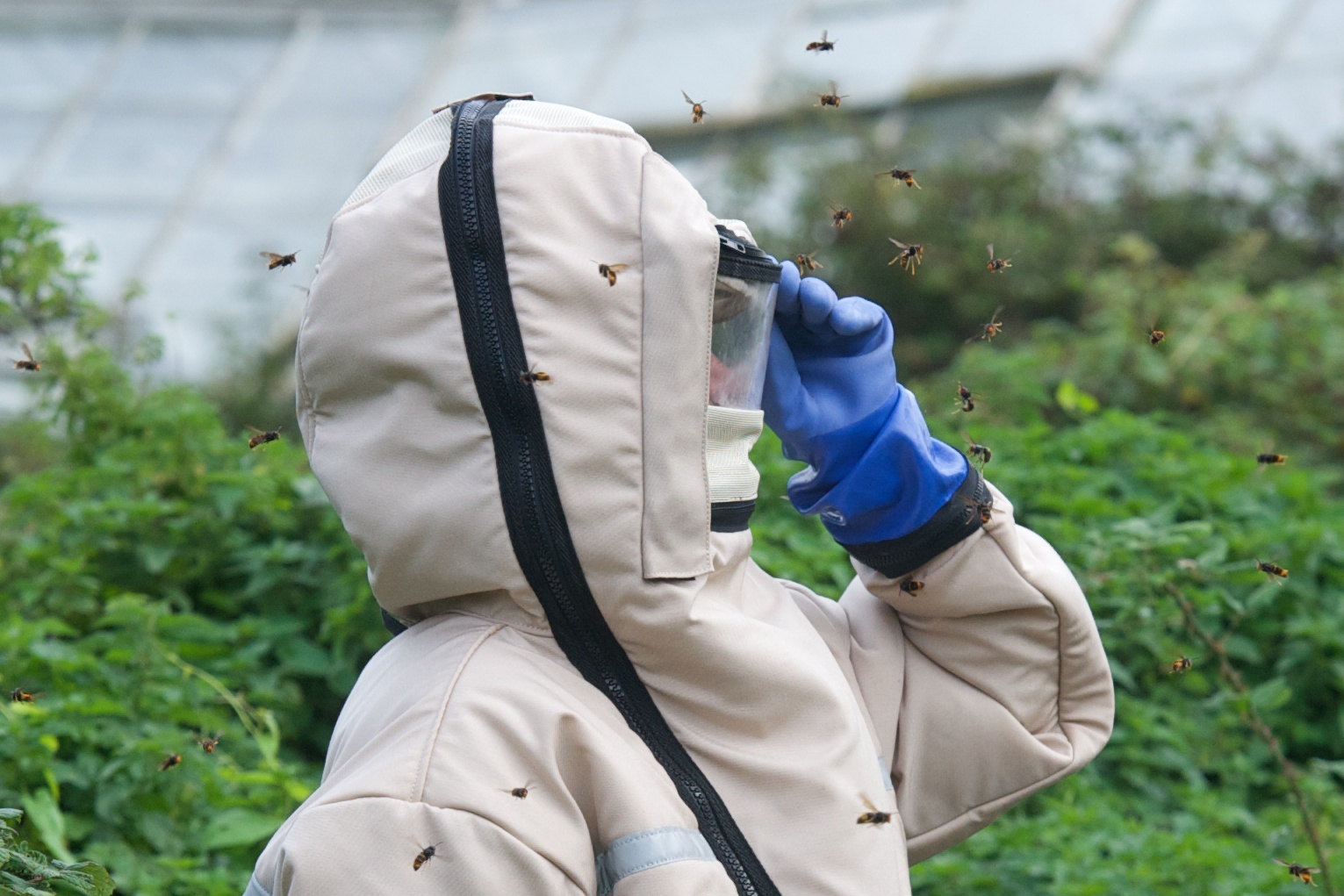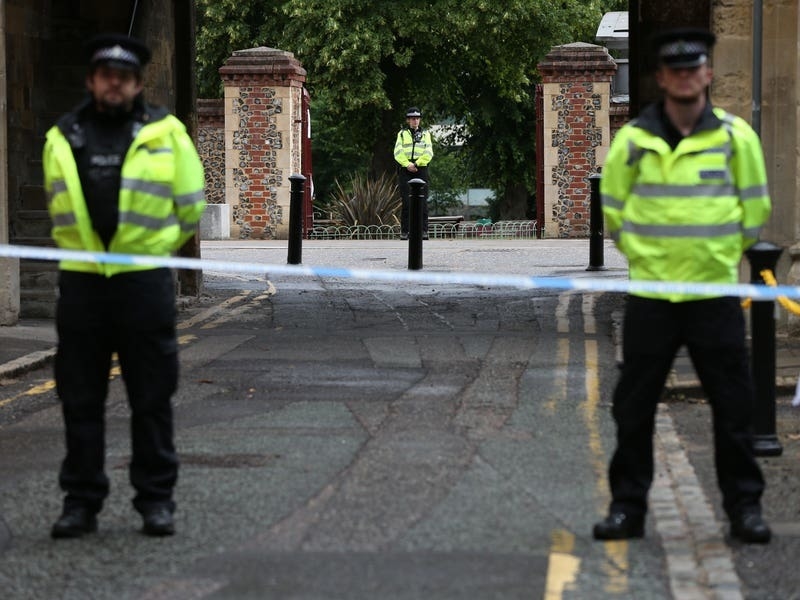Entomologist Dr John Feltwell visited Jersey this week to join beekeepers Bob Hogge and Bob Tompkins as they dealt with the latest of 13 Asian hornet nests discovered since June.
Until last week nests had been found in trees or inside buildings but the discovery of two in hedgerows is causing concern for public safety.
Dr Feltwell says nests so close to walkers, cyclists and farm workers pose a serious risk of attack by hundreds of angry insects.
‘A nest could be in a roadside hedge and somebody could come along with a strimmer and cut it from its setting and release a swarm of hornets,’ he said.
‘The Ambulance Service needs to be able to respond properly to such an incident.’
There was a case in France, he added, when an ambulance crew arrived to treat a woman who had been stung more than 150 times but the team was not equipped to treat her while the hornets were still swarming.
At 6 mm, the Asian hornet’s sting is 2 mm longer than that of a local wasp or bee, and more painful. Six people have died in France after being stung and the sting can penetrate standard protective clothing
The invasive insect has rapidly spread throughout France, and into Belgium, Germany, Spain and the British Isles since it first arrived in Marseilles, in a consignment of flower pots from China, in 2004.
It spread to Jersey in August 2016 and beekeepers are working with the Environment Department to try to eradicate nests before the queens leave to establish new colonies in the spring.
The species is the biggest threat to the survival of the honey bee, as one nest can contain about 6,000 hornets, each of which can kill 50 bees in a single day. Dr Feltwell, who has studied the invasive insect’s rapid spread through France, says he is impressed by the Island’s efforts to hunt down and destroy nests.
‘It is pioneering work that nobody is doing in England or anywhere else and it is down to Bob Hogge and the Jersey Beekeepers Association,’ he said.
Mr Hogge has developed a tracking system that involves trapping and marking hornets’ flight paths to locate and destroy nests.
‘What Bob is doing will become the model approach that will have to be rolled out in the UK when the Asian hornet arrives in greater quantities, and that shows how important his work is,’ Dr Feltwood said.






